CES Evolves to Be More Valuable than a Trade Show

Even though CES is more than a month in the rearview mirror there was something “different” about the event we couldn’t shake and couldn’t quite figure out.
It wasn’t that it was our first rodeo because cripes, we’ve been at this trade show stuff since the days when there were two CESs a year – Vegas and lovely summers in hot and humid Chicago.
Sure, the show was bigger – about 4500 companies from 160 countries spread over 2.9M sq. ft plus every hotel meeting room – but that wasn’t what was different.
20,000-plus product announcements didn’t make the difference because probably 40 percent of them will never see the light of day – dumb idea, poor management, no market, VC well dried up.
170,000-plus people was an impressive number but that just proved that technology is important to every segment of business, industry, personal life … everywhere in the world.
Most trade shows eventually outlive their usefulness. They get so full of themselves they collapse under their own weight.
Companies spend a ton of money to show off how good they are compared to the guy next door.
People don’t need to attend these shows anymore.
They can find all the companies’ new stuff online even when some publicists use the outmoded, arcane statement that the news is embargoed and send it to everyone.
But CTA (Consumer Technology Association) just keeps reinventing, expanding the event’s focus/reach.
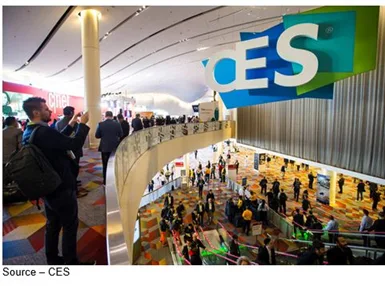
It dawned on us when we took a break above the crowd on the mezzanine of central hall.
All of the people in and around the booths were just average business professionals from somewhere who wanted to pitch/sell or find a tech-based product or solution.
They weren’t like their government officials blustering or scheming against each other but people talking to each other, exploring ideas to solve a specific business or personal need.
It wasn’t just putting on a six-day (including the days of sessions before the doors opened) selling marathon.
Whether they were from Hungary, Mexico, Brazil, China, India, Dubai, Ukraine, Canada, Australia, Nigeria, Angola, Italy or nearly any country, they found it useful to learn something and gain insights to hopefully enable their business to succeed and have an impact.
The show floor was nice and yes, exhibits pay the bills but the keynotes and working sessions addressed real industry/world problems, presented options that could affect the future … not stuff that got techies hearts beating fast.
From the sessions we attended, it felt as though CTA had focused on educational/information sessions for professions. It felt like a condensed UN/Davos surrounded by techie toys rather than a tech event where the program simply supported the displays.
It turns out that’s what professional people want to hear.
The only shortfall was that it would have been good to have some of the 200 government leaders from around the globe who attended to have a voice in some of the session panels because the conference is the world stage for technology that will shape the future.
Maybe next year.
Issues like diversity, tomorrow’s workforce, sustainability, M&E, human rights and privacy are global, even though countries have different priorities.
CTA did a good job of having diverse representation in their program with nine of the keynote speakers and moderators being women and solid female representation on most of the panel sessions.
More importantly, typically non-techie firms see an importance in tying their future to tomorrow’s technological opportunities like:
- Delta Airlines – yes, there’s a lot of tech in planes and even more involved in the backend of the operation but CEO Ed Bastian highlighted new passenger messaging technology and cool ecosystems for handling the heavy lifting
- Mercedes again showed CES is still a major event for autos with CEO Ola Kallenius showing off a breathtaking concept car, Avtr, introduced by James Cameron
- Colgate (CTO Dr. Patricia Verdiun) and Unilever (CEO Alan Jope) saw the importance of leveraging technology by announcing advances in oral and personal, health announcements plus the necessity for a Charmin delivery robot
Putting politics on the shelf, we were glad to see CTA have Ivanka Trump keynote on “The Path to the Future to Work” because as Shapiro emphasized the industry has to work with all governments on important issues.
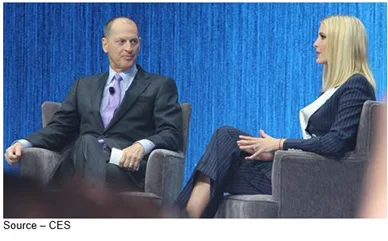
During the interview, she emphasized one of the White House’s priorities is to work with private industry to build the workforce.
“If we can’t come together on this, we can’t come together on anything,” she said.
An initiative that has a high priority with Shapiro and CTA, she noted that part of her focus was on skills-training and entrepreneurship and that she was actively looking for new ways to bring people into the workforce.
Shapiro asked about immigration and specifically about allowing highly skilled workers to come to the U.S. to fill vacant jobs. Trump agreed that the government’s policies should be revised to allow highly educated non-citizens to live and work in the U.S. while emphasizing that attention also has to be given to marginalized, unskilled Americans.
Shapiro noted that 42 CTA members have identified nearly 400,000 training opportunities over the next five years.
With the US having one of the weakest parental leave programs among industrialized countries, Shapiro asked Trump about the recently signed law that grants federal workers 12 weeks of paid parental leave.
“We cannot ask all of you to offer this benefit to your workforces unless we are able to do it ourselves,” she responded.
Addressing Shapiro and the audience at the end of the interview she said, “I believe innovation is a net job-producer… Innovation will allow for more inclusive growth.”
Toward 5G Everywhere
After a two-year delay, FCC chairman Ajit Pai finally sat down with CTA’s Shapiro to address the next- generation 5G technology in the US, conceding there were challenges in getting it everywhere it is needed.
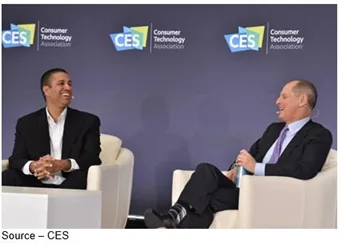
He acknowledged it was important to get 5G service widely available in cities for smartphone usage and streaming entertainment, but he saw an equally important need for fixed wireless such as 2.5Ghz that is presently being trialed.
Having grown up in southeast Kansas, he said there were real rural needs as well–especially for agriculture and telemedicine.
Shapiro suggested that Microsoft’s airband proposal that uses white space between TV channels might be an option.
Pai said he encouraged that and other innovative solutions.
Calling the net neutrality battle more politics than policy, he suggested that Congress needed to provide more clarity about the spectrum so the FCC could free up as much as possible.
“That is almost minor compared to the difficulty service providers are having finding/training people to actually build out the infrastructure,” he noted.
City of Tomorrow
Highlighting the importance of the show, Toyota unveiled the firm’s Woven City, a prototype community of the future.

Built near Mount Fuji, the company will build the 175-acre planned community as an experimental lab for such technologies as self-driving vehicles powered by hydrogen fuel cells, robots, smart homes, personal mobility devices and more.
Ordinary folks will live and work in the Woven City; and you can be certain companies and communities will be visiting and taking notes.
Addressing the Issues
The CTA sessions at CES explored issues and challenges companies and technology around the globe can help resolve.
Privacy was mentioned as much as 5G and AI at CES, and more than a dozen sessions addressed the subject.
The privacy supersession got the most attention because no-show Apple felt it was important to have Jane Horvath, senior director of global privacy, on the panel along with Facebook’s chief privacy officer for policy Erin Egan; Proctor & Gamble’s global privacy officer, Susan Shook; and FTC commissioner Rebecca Slaughter.

As you would expect, Egan got the toughest questions because of last year’s data breach/usage scandals, recent FTC privacy penalty and FTC antitrust investigation.
Every time Apple’s Horvath touched on one of the company’s privacy protection measures, Egan quickly said Facebook was just as protective, but the discussion was tense at best.
P&G’s Shook said not all location data sharing is nefarious, explaining her firm collects women’s zip code data to localize advertising for women who live in humid climates.
FTC’s Slauter countered, saying different types of data are more and less sensitive and location data merits protection.
She added that the landscape is evolving, noting that she has a Ring doorbell system and that there was a snow day in D.C. while she was at CES so, knowing who came to the door and knowing when her kids were at home was very important to her.
But she added that people need to know how their data is collected and used.
“People need to, have a right to know and understand,” she emphasized.
Old You Say!
The world is getting older.
Yesterday, 10,000 U.S. baby boomers turned 65.
By 2050, 17 percent of the world population will be 65 and over, double those age five and under.
It means both a tremendous opportunity for tech firms to deliver advanced healthcare as well as a dramatic need to prepare and keep people productively working longer.

Digital health has become a lifestyle with 5G and AI playing vital roles in handling healthcare and health maintenance in a new way, especially for the aging population according to Steve Koenig, CTA’s VP of market research, said during the show.
“Hospitals are becoming data centers,” he added.
To discuss the growing needs, the AARP held a Longevity Economy session to discuss the healthcare and changes in the working environment that will have to take place to keep the more productive people committed to helping companies grow and expand.
Forbes’ Marty Swant, moderator for the session, noted that companies most valuable asset – the knowledge and expertise held by late millennials and boomers – must be used and used properly for the technology and the economy to continue to grow.
More than 150 exhibitors highlighted the shifting population’s importance with evidence-based technology products.
During the panel session, Samsung’s Vice President for Digital Health, Natalie Schneider, discussed how the firm was helping reshape how patients engaged with their health through intelligent digital intervention.
To show that age is only a number; Joe Montana, SF 49ers hall of fame quarterback, emceed the packed sports for staying power event.
Feeding Entertainment
We enjoy the meetings at NAB and IBC but CES has taken streaming a step further by highlighting how the streaming content is being delivered to consumers and how it is being supported and received.
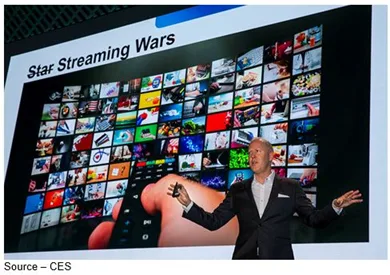
CTA’s Koenig noted that consumers around the globe now have an abundance of video choices and in the industry, there is becoming an abundance of competition.
“The mosaic of content we currently manage is about to get more granular,” he said, noting that streaming services will reach more than $16.7B by 2023, up from $10B this year.
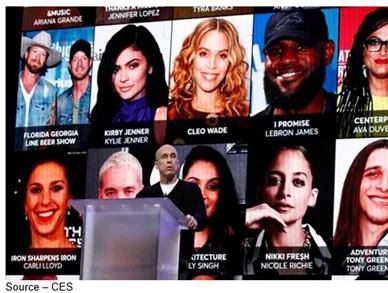
“By delivering on the promise that each individual viewer’s programming interest is served on their schedule and location, the media; entertainment and advertising industries are in a prime position to accelerate,” said Allan McLennan, Chief Executive PADEM Media Group. “This year, we may have realized what we’ve been looking for such as Game Changers in media measurement, content choices and economic models that both programmers and viewers have been pushing for to drive real growth on all platforms.”
Meg Whitman, Quibi CEO, outlined the firm’s short-form mobile streaming service that will serve up 50 +/- original shows as well as a large volume of bite-sized content for $5 a month.
She and Jeff Katzenberg, Quibi founder, said the short-form content will be especially inviting to the smartphone generations.
Techies and company management/marketing packed the M&E sessions to gain a better understanding of the software and services needs of the new services where sales will grow by 25 percent in the year ahead.
Network and service executives emphasized that the average household will subscribe to a limited number of subscription services; and that massive libraries of content people want, but don’t want to pay for, will become increasingly popular.
Ad-supported streaming services that are attracting customers to fill their screens – large and small – include soon-to-be-released Peacock and Amazon’s IMDb TV, Tubi, Quibi, Plex, Hulu, Roku, Xumo, Pluto TV, Rakuten TV, Joyn and hundreds of free services around the globe.
Linda Yaccarino, NBCUniversal’s chairman of advertising and partnerships, noted that because the new services are IP-based, content will become more personalized and will be far less overbearing as yesterday’s pay-tv experience.
Without hardly noticing it, CTA has moved CES beyond being a nice, big trade show to a must-attend educational, informational conference. It’s an event where people actually talk to each other from wherever they’re from in a civil manner.
That’s what the industry needs; that’s what the world needs.
And yes, the exhibits are good too.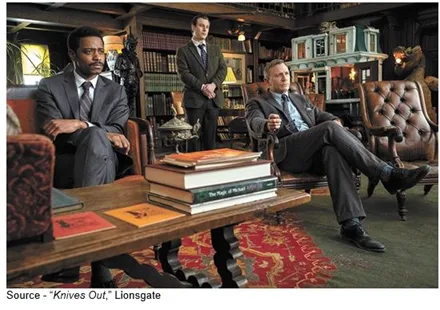
As Benoit Blanc looked over the event he said, “You’d think it’d be like a game show, but think of a community production of a tax return.”
# # #
Andy Marken – [email protected] – is an author of more than 600 articles on management, marketing, communications, industry trends in media & entertainment, consumer electronics, software and applications. He is an internationally recognized marketing/communications consultant with a broad range of technical and industry expertise especially in storage, storage management and film/video production fields. With his expertise and experience, he has also developed an extended range of relationships with business, industry trade press, online media and industry analysts/consultants.